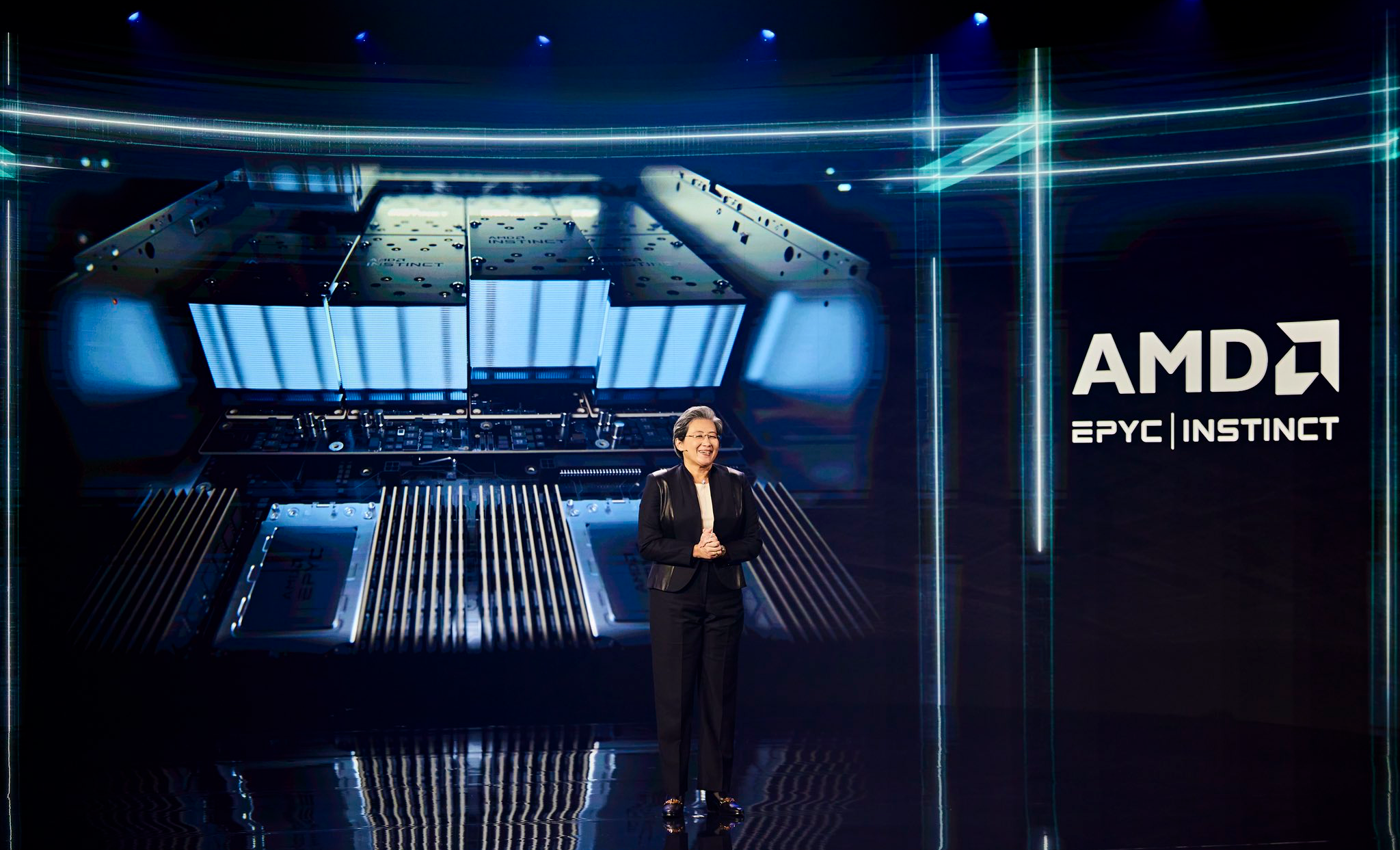AMD Shows Off Instinct MI200 Accelerators for Supercomputers
AMD is expected to formally announce its next-generation EPYC processors with 3D V-cache and Instinct MI200-series accelerators next Monday at a special online event. However, in a bid to provoke some additional interest ahead of the event, it decided to show what it plans to announce already today.
In a Twitter post, Lisa Su, chief executive officer of AMD, posted a picture of herself with a 2-way CPU/8-way GPU server in the background. The image includes AMD EPYC and AMD Instinct branding, which gives an obvious idea regarding what the company is planning to announce and demonstrate. Yet, there are some interesting points to add.
AMD's next-generation EPYC 7004-series 'Genoa' processors are rather far out, so it is unlikely that they will be discussed on Monday. Meanwhile, AMD will probably talk about its EPYC 7003-series 'Milan-X' CPUs with 3D V-cache. These processors are projected to be drop-in compatible with existing motherboards, so what we might be seeing in the picture are these new CPUs sitting next to 16 DDR4 DIMM modules.
Perhaps more interesting are AMD's next-generation Instinct MI200-series compute accelerators codenamed Aldebaran based on the CDNA 2 architecture. The Aldebaran is AMD's first multi-chip-module (MCM) compute GPU comprised of two dies connected using AMD's Infinity Fabric that are equipped with 128GB of HBM2E memory. The top-of-the-range MI250X model will feature 110 compute units operating at 1.70 GHz and delivering nearly 48 FP64 TFLOPS performance. The Instinct MI200-series is projected to use the OAM (Open Accelerator Module) form-factor and it seems that the part is going to look like this.
Both AMD EPYC 7003-series and AMD Instinct MI200-series accelerators are set to power numerous upcoming supercomputers, including the first exascale-class system Frontier as well as Setonix.
Keeping in mind that modern supercomputers heavily rely on GPUs, it is evident that a machine with two CPUs and eight OAM compute modules that Lisa Su demonstrated is aimed at high-performance computing applications. What remains to be seen is whether this machine is a node from Frontier or Setonix, or perhaps AMD's rival for Nvidia's DGX HPC systems. We are going to find that on Monday.
Get Tom's Hardware's best news and in-depth reviews, straight to your inbox.

Anton Shilov is a contributing writer at Tom’s Hardware. Over the past couple of decades, he has covered everything from CPUs and GPUs to supercomputers and from modern process technologies and latest fab tools to high-tech industry trends.
